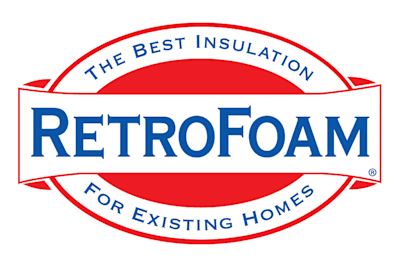Buying Insulation: Common Mistakes That Could Cost You Big


When you’re ready to buy home insulation, you’re probably doing what most homeowners do – researching options, trying to balance price with performance, and maybe even considering a little DIY action.
But let’s be real: buying insulation isn’t like picking out throw pillows. Mistakes made during this process can lead to higher energy bills, moisture problems, or that frustrating feeling of “Why is my house still cold?”
As your Building Science Brainiac, I’m here to bring a little science to your shopping cart and break down the most common insulation-buying blunders so you can avoid them from the start.
Insulation Buying Mistakes
From going with the cheapest option to trying to do it yourself, here are some of the most common insulation buying mistakes homeowners make.
R-Value Isn't the Only Thing That Matters
We get it – R-Value is the insulation world’s buzzword.
But here’s the thing: if you focus only on that number, you’re missing half the equation.
Foam insulation, for example, creates an air seal. That seal is often more important than the R-Value because it keeps your conditioned air inside and outdoor elements outside. Without it, even high R-Value insulation can underperform.
So yes, R-Value is important. However, performance ultimately comes down to air sealing, and foam insulation brings both to the table.
Don't Just Buy Cheap Insulation
It’s tempting to buy cheap insulation and call it a day, especially if you’re working on a tight budget.
But that lower price tag could cost you more down the road.
- Cheaper materials = more air leaks
- More air leaks = higher energy bills
- Higher energy bills = calling a contractor to fix it anyway
In other words, you get what you pay for. Invest in quality upfront to save yourself the headache later.
Not All Insulation Works Everywhere
Different parts of your home have different needs.
That fluffy pink stuff might work in your attic, but it’s a disaster waiting to happen in a damp crawl space.
- Crawl spaces with moisture issues? Avoid materials that trap moisture.
- Attic too hot? You’ll need something with thermal resistance and air sealing.
- Rim joists? A great place for foam, not fiberglass.
Do your research before you buy home insulation for a specific area, or, better yet, let an expert help.
Vet Your Insulation Contractor
Here’s the deal: Not all insulation contractors are created equal.
- Read their Google reviews
- Ask about their experience with the type of insulation you want
- Make sure they’re licensed and insured
- Check if they offer warranties or guarantees
If they can’t explain the science behind their product, walk away.
Be Honest About DIY
Look, I love a good DIY project as much as the next nerd, but insulating your home isn’t always a weekend warrior job.
If you don’t know what you’re doing, you could:
- Buy too much or too little material
- Fail to seal gaps
- Waste time and money fixing mistakes
Some insulation jobs can be done yourself, but for more complex spaces or materials (like spray foam), it’s best to call in the pros.
Insulation Isn't a Pest Control Plan
Some products are marketed as “pest-resistant,” and while they may contain repellents, that doesn’t mean your pest problem is solved.
Remove the pests first, then upgrade your insulation. Otherwise, the critters will just move somewhere else in your walls. Gross.
It's Not Soundproofing (But It Can Help)
Yes, foam and some other types of insulation can dampen sound, but if you’re trying to turn your basement into a sound studio, you’ll need more than just insulation, according to Accoustical Solutions.
Think:
- Acoustic panels
- Specialized flooring
- Isolated wall construction
If you want to reduce noise transfer between rooms, insulation can help. If you want to bang drums at midnight, you’ll need a full acoustic setup.
More Isn't Always Better
In insulation, more doesn’t equal better.
In fact, adding too much material can create air gaps if it’s compressed or improperly installed.
That means:
- Less efficiency
- More drafts
- Wasted money
Insulation only works when it’s installed at the correct thickness and fit. So measure carefully, and don’t go overboard.
But Too Little is Just as Bad
On the flip side, not buying enough insulation is a surefire way to leave your home uncomfortable.
You’ll end up with:
- Cold spots
- High energy bills
- Gaps in coverage
The solution? Measure twice, and make sure the material is properly installed to provide complete coverage.
Hybrid Methods (Like Flash-and-Batt) Don't Always Work
Flash-and-batt – where a thin layer of closed cell foam is combined with fiberglass – might sound like the best of both worlds.
But one inch of closed cell isn’t enough to create an air seal. And fiberglass? It still lets air move freely.
If your goal is energy efficiency and comfort, don’t waste your money trying to mix and match. Commit to a full solution that actually works.
How to Buy Home Insulation the Smart Way
Now that we’ve busted the biggest myths and mistakes, here’s how to actually buy insulation with confidence.
- Get an Energy Audit: Find out where your home is leaking energy before you buy anything.
- Know Your Insulation Needs: Different areas of the home require different types of insulation.
- Set Your Budget: Don’t just buy cheap insulation – factor in long-term performance and energy savings.
- Choose a Reputable Contractor: Reviews. Certifications. Experience. Check all three of these.
- Don’t Overdo it or Skimp: Precision is key, but just the right amount.
Buy the Best Insulation for Your Existing Home
If you’re ready to stop guessing and start insulating smarter, check out our Dealer Finder to connect with a RetroFoam expert near you.
If you want to do more research about foam insulation, head over to our Learning Center. There you will find tons of articles and videos to answer all of your building science questions.
Key Points:
- Air seal > R-Value – Foam insulation offers both.
- Cheap insulation can cost you more over time.
- Pick the right materials for the right space.
- Vet your contractor – experience matters.
- DIY with caution – not every job is weekend-friendly.
- Insulation for pest control – handle infestations first.
- Soundproofing requires more than insulation.
- Too much insulation can create gaps.
- Too little insulation leaves your home uncomfortable.
- Hybrid methods like flash-and-batt aren’t always effective.
Related Articles
Essential Tips for Buying RetroFoam Insulation
What to Look for When Hiring an Insulation Contractor
About Amanda Emery
Amanda previously has worked as a breaking news and crime reporter, TV news producer, and editor. As a journalist, she has won several awards from The Society of Professional Journalists - Detroit Chapter and the Michigan Press Association. Amanda uses her experience as a journalist to write content that will help educate homeowners on foam insulation benefits. When Amanda isn’t writing, she’s spending time with her husband Chris, daughter Lilith-Maeve, and rescued huskies Danger and Wendigo. She also loves knitting, making art, and cooking.


